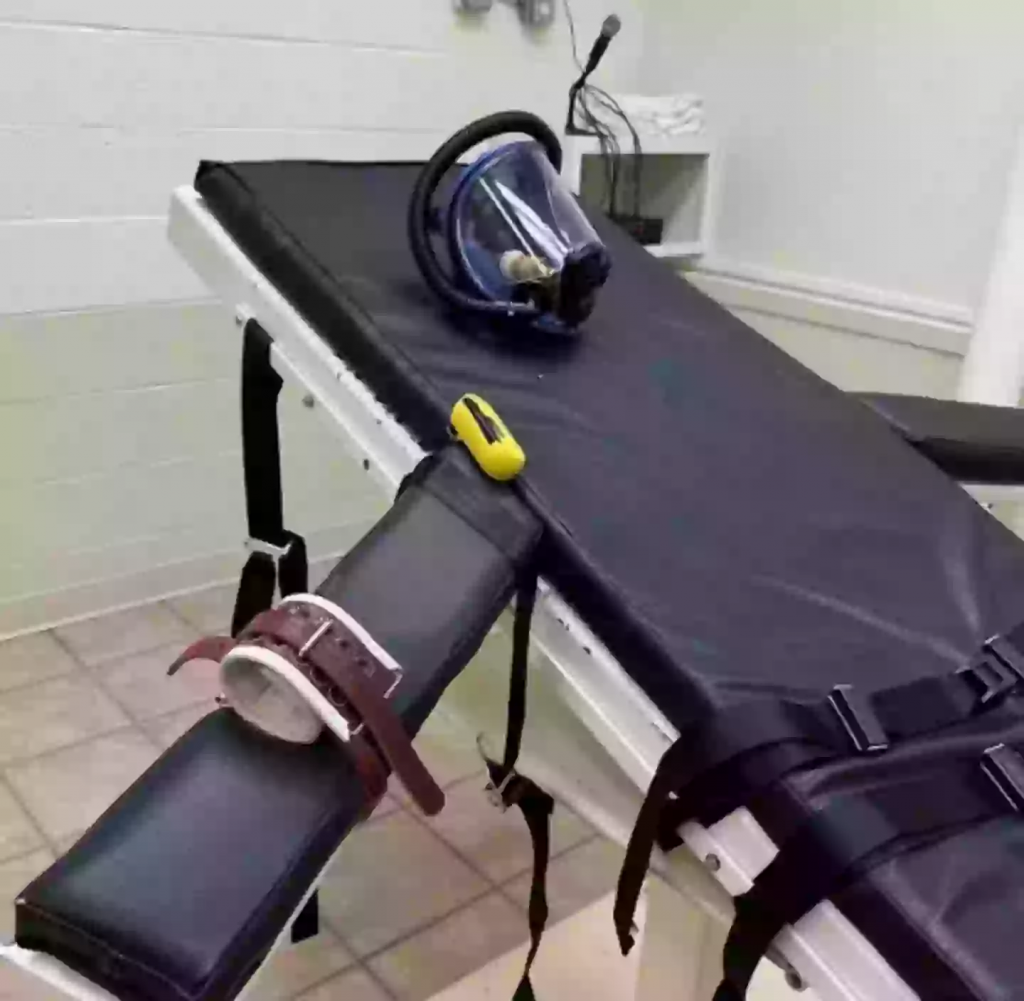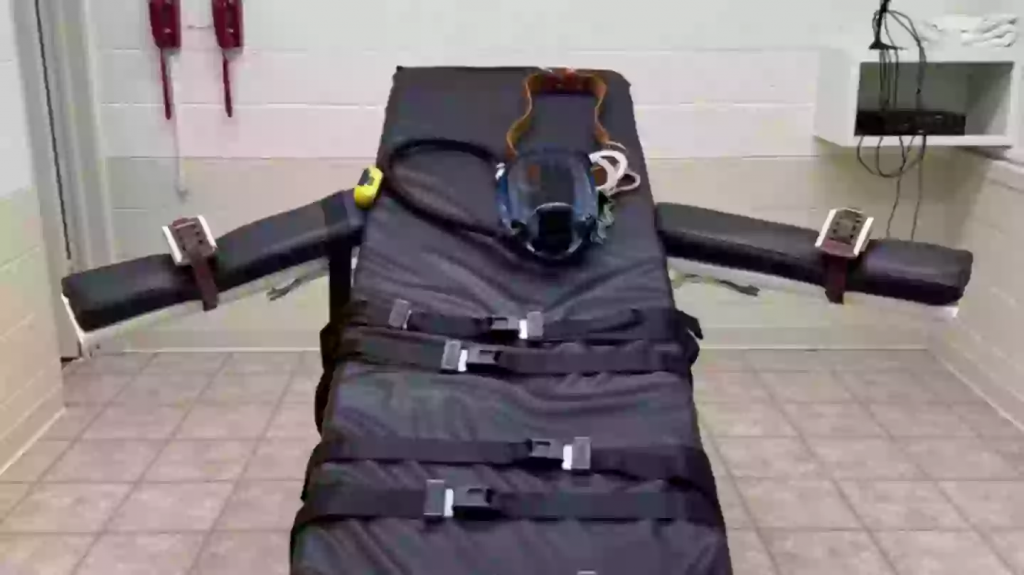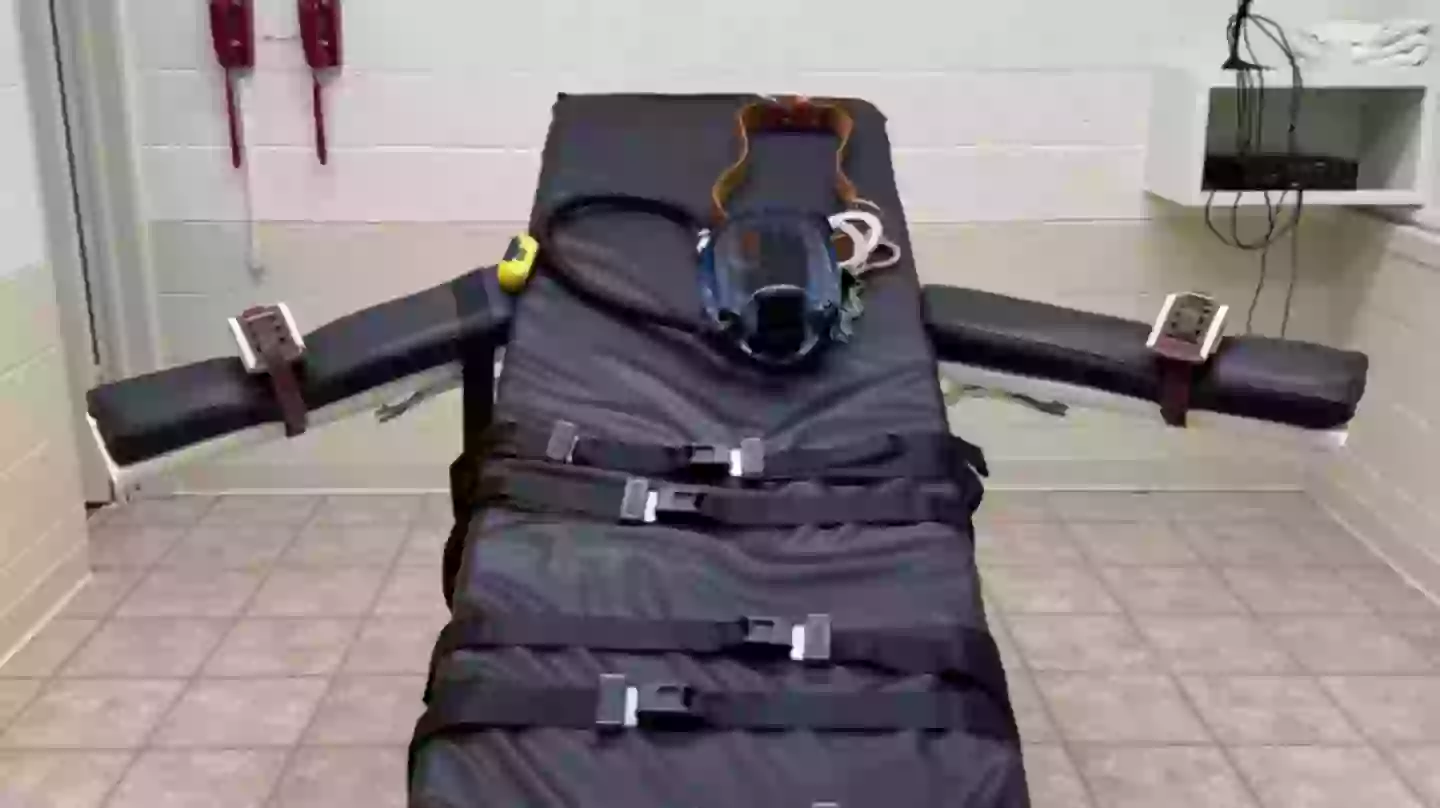Today, Jessie Hoffman, a 46-year-old death row inmate, faces execution in Louisiana using a method that many veterinarians consider too cruel even for animals. Hoffman, convicted at just 18 for the brutal assault and murder of Mollie Elliott in 1996, has spent almost three decades on death row. His looming execution marks the first time Louisiana will enact capital punishment in fifteen years.

Initially, Hoffman had been granted a temporary reprieve by a state judge, raising brief hopes that his sentence might be reconsidered or at least delayed. However, those hopes were dashed when the Fifth Circuit Court of Appeals overturned the decision last Friday, reinforcing the finality of his fate. Hoffman’s attorneys have persistently argued that his method of execution—nitrogen gas—is not only cruel but barbaric. They insist the process constitutes “cruel and unusual punishment,” explicitly forbidden by the United States Constitution.
Nitrogen gas, which has only been used by Alabama prior to Louisiana’s adoption, has been heavily criticized by legal experts and human rights advocates. When the state of Alabama executed Kenneth Smith last year, the scene was described by witnesses as deeply disturbing. Observers recounted how Smith violently struggled on the gurney, gasping desperately for air, his body convulsing uncontrollably. This harrowing account sharply contradicts Alabama officials’ claims that nitrogen gas executions are swift, painless, and humane.

The way nitrogen gas kills is essentially by oxygen deprivation—hypoxia—which gradually suffocates the victim. Although proponents claim victims lose consciousness swiftly, veterinarians who previously witnessed its use in animal euthanasia strongly dispute these assertions. Dr. Lee Capone, a prominent Louisiana veterinarian, vividly remembers his traumatic experience from the 1980s when nitrogen was briefly employed to euthanize dogs. He recalled observing clear signs of severe distress in animals: wide, panicked eyes, excessive salivation, vomiting, and other clear indicators of profound fear and agony.
Dr. Capone emphasized that the horrors he witnessed were more than enough to convince him that nitrogen euthanasia was inhumane and intolerable. If animals experienced such torment, the suffering inflicted upon a human being would be unimaginable and ethically indefensible. This unsettling comparison has only amplified calls for Louisiana to reconsider using nitrogen gas.
Despite these ethical concerns and ongoing legal battles, Louisiana prison authorities appear prepared to proceed. Images released by the state depict the starkly grim execution chamber, which features a gurney upon which Hoffman will be tightly strapped down. A mask connected to a nitrogen tank is to be affixed over his face, cutting off the oxygen supply until death occurs. Unless another unexpected legal intervention occurs at the last moment, Hoffman’s execution will take place sometime after 6 pm local time today.
Meanwhile, a similar controversy unfolds in South Carolina, where another death row inmate, Brad Sigmon, has chosen to die by firing squad—a method that had not been utilized in the state for over 15 years. Sigmon, sentenced to death for the brutal murders of his ex-girlfriend’s parents, David and Gladys Larke, has appealed relentlessly against his sentence. These appeals, however, have all failed.
Sigmon specifically selected the firing squad out of fear of prolonged agony from lethal injection or electrocution. His lawyers have vocally criticized state authorities, claiming they intentionally withheld critical information about the chemical composition and quality of drugs intended for lethal injection. They further contend that Sigmon was mentally unstable at the time of the crimes, arguing that imposing the death penalty on someone suffering from severe psychological distress is fundamentally unjust.
Unfortunately for Sigmon, the South Carolina Supreme Court recently denied his final appeal. His only remaining hope lies with Governor Henry McMaster, whose intervention would represent an unprecedented move. Historically, no governor in the state has halted an execution since the death penalty was reinstated in 1976. With the odds heavily stacked against him, Sigmon’s chances of reprieve remain slim.
Details about Sigmon’s impending execution have emerged in chilling specificity. He will be escorted into a starkly renovated chamber previously used for the electric chair. Sigmon will be seated, blindfolded, and given one last chance to deliver a statement. Once he concludes, a small target marker will be placed over his heart. At a predetermined signal, three prison staff volunteers will simultaneously fire their rifles, ending Sigmon’s life. A physician standing by will then verify his death.

Sigmon’s choice of a last meal—three large buckets of KFC chicken—is said to be an act of camaraderie, intended to be shared with other inmates on death row, reflecting an odd moment of humanity amid the bleak circumstances.
The controversies surrounding both Hoffman’s and Sigmon’s executions have reignited national conversations on the morality, efficacy, and methods associated with capital punishment. Both executions highlight profoundly uncomfortable questions about human rights, the definition of cruelty, and the very nature of justice itself.
